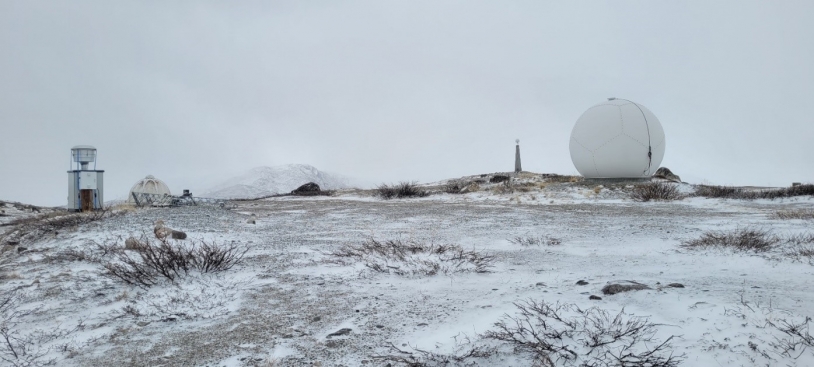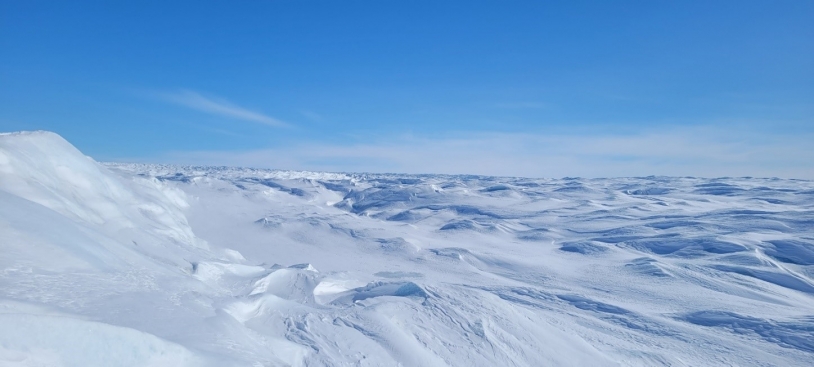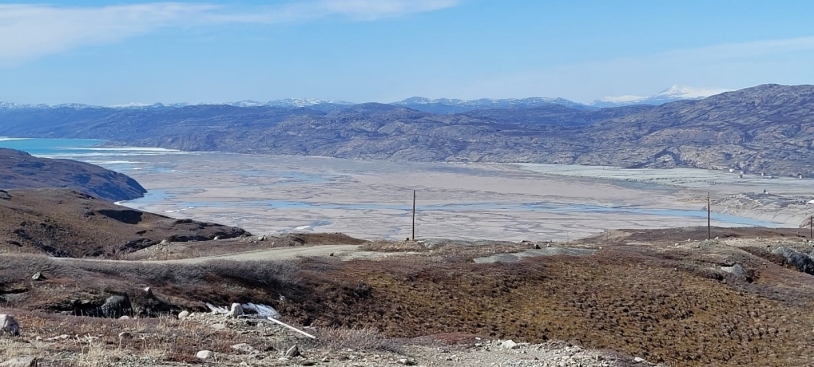
Caption: Flying over the fjords in Greenland - Credit: aroundtheworld.photography for Getty images
June 2024, the first transatlantic flight of an open stratospheric balloon (BSO) will carry a scientific gondola weighing almost a ton.
As this proposal has aroused great interest among French, German, Italian and Canadian scientists, the flight is planned for the summer solstice to avoid the day/night transitions that would cause the balloon to lose altitude.

Caption: Map of the transatlantic flight - Credits: Stéphane Louvel
To ensure the safety of the flight and enable scientific measurements to be transmitted in real time, a tracking station will be set up in Greenland during the flight over these frozen lands and the Baffin Sea.

Caption: View of Kangerlussuaq, west coast of Greenland - Credit: Benedek for Getty images
Located on the west coast of Greenland at 67°N latitude, only three container ships sail to the port of Kangerlussuaq each year. The first rotation does not take place until June, depending on the state of the ice, which is far too late for the forecasts defined for this first flight. The CNES telemetry station is therefore sailing towards Greenland and will be hibernating in polar bear country.
A preparatory mission has therefore become urgent to organize the logistics around the arrival of the 2 GHz antenna and its storage in good conditions: choosing an installation site and initiating the frequency emission declaration, finding a local manufacturer and planning the energy and network requirements... and above all understanding the operation of this isolated site where nothing works like it does elsewhere but where everything is possible!

Caption: Black Ridge site in Kangerlussuaq - Credits: Stéphane Louvel
The station will be set up on the Black Ridge site, 300 meters above sea level and three kilometers from Kangerlussuaq after the bridge over the glacier.
This particular flight requires the flight control and communication system to be upgraded. The BSO subsidiary team has been working for over a year on this project to increase the number of satellite links (Iridium / Inmarsat) used to control the balloon, and also to propose an on-board computer to ensure that the scientific instruments can be monitored when the S-band antennae in Sweden and Greenland are not visible. This new configuration will be the subject of a qualification flight in August 2023 from the Timmins base in Canada.
The station will be installed at the end of May 2024 by the ground segment team at Aire-sur-l'Adour. Cabling, redundant power supply by generators, grounding, connection to the Internet network, removal of the satellite dish from the roof of its container, nothing will be easy, but from this promontory the antenna will have optimum visibility with a view of the ice pack to the east and the fjord to the west.

Caption: View of the ice cap east of Kangerlussuaq in June 2023 - Credit: Stéphane Louvel

Caption: View of the fjord west of Kangerlussuaq in June 2023 - Credit: Stéphane Louvel